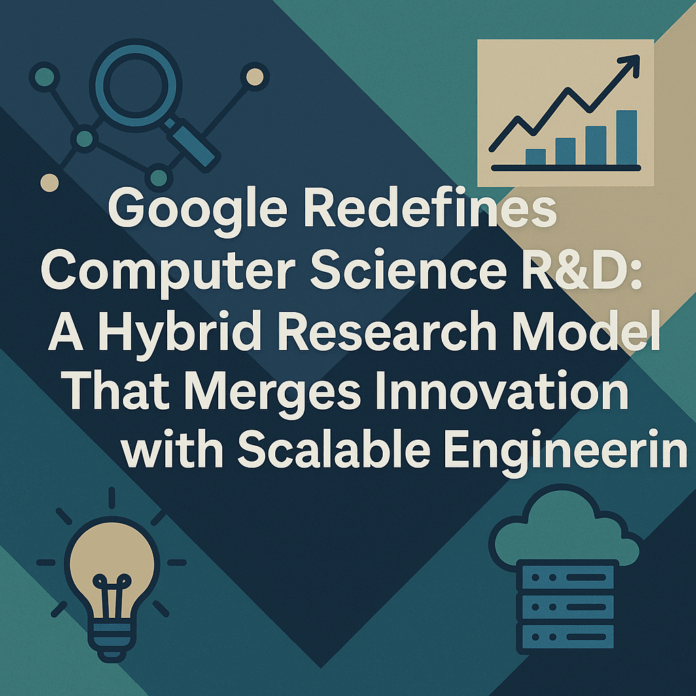Computer science research has evolved into a multidisciplinary effort involving logic, engineering, and data-driven experimentation. With computing systems now deeply embedded in everyday life, research increasingly focuses on large-scale, real-time systems capable of adapting to diverse user needs. These systems often learn from massive datasets and must handle unpredictable interactions. As the scope of computer science broadens, so does the methodology, requiring tools and approaches that accommodate scalability, responsiveness, and empirical validation over purely theoretical models.
The difficulty arises when connecting innovative ideas to practical applications without losing the depth and risk inherent in true research. Rapid development cycles, product deadlines, and user expectations often overlap with the uncertain timelines and exploratory nature of research. The challenge is enabling meaningful innovation while maintaining relevance and practical outcomes. Finding a structure where exploration and implementation coexist is essential to making real progress in this demanding and high-impact field.
Traditionally, the division between research and engineering has led to inefficiencies. Research teams create conceptual models or prototypes, which are later handed over to engineering teams for scaling and integration. This separation often results in delays, failures in technology transfer, and difficulty adapting ideas to real-world use. Even when research has academic value, the lack of immediate relevance or scalable deployment options limits its broader impact. Conventional dissemination methods, such as peer-reviewed papers, don’t always align with the fast-moving demands of technology development.
Google introduced a hybrid research model integrating researchers directly into product and engineering teams. This approach was designed to reduce delays between ideation and implementation, enabling faster and more relevant outcomes. Researchers at Google, a company that runs at the intersection of massive computing infrastructure and billions of users, operate within small teams that remain involved from concept to deployment. By embedding development research, the risk of failure is offset by iterative learning and empirical data gathered from actual user interactions. This model promotes cross-functional innovation where knowledge flows seamlessly between domains.
The methodology adopted by Google supports research through robust infrastructure and real-time experimentation. Teams write production-ready code early and rely on continuous feedback from deployed services. Elaborate prototypes are avoided, as they slow the path to real user impact. Google’s services model allows even small teams to access powerful computing resources and integrate complex features quickly. Their projects are modularized, breaking long-term goals into smaller, achievable components. This structure keeps motivation high and provides frequent opportunities for measurable progress. Research is not isolated from engineering but rather supported by it, ensuring that practical constraints and user behavior shape every line of code and every experiment.
The results of this model are substantial. Google published 279 research papers in 2011, a steep rise from 13 in 2003, showing an increased emphasis on sharing its scientific advancements. High-impact systems such as MapReduce, BigTable, and the Google File System originated within this hybrid structure and have become foundational to modern computing. Over 1,000 open-source projects and hundreds of public APIs have emerged from this integrated approach. Google Translate and Voice Search are examples of small research teams that transitioned ideas into large-scale products. Contributions extend to global standards, with team members shaping specifications like HTML5.
By deeply connecting research with product development, Google has built a model that fosters innovation and delivers it at scale. Its hybrid research system empowers teams to work on difficult problems without being detached from practical realities. Projects are designed with user impact and academic relevance in mind, allowing teams to adjust direction quickly when goals are unmet. This has led to projects such as Google Health being re-evaluated when they did not yield the expected outcomes, showing the model’s flexibility and pragmatism.
Combining experimentation, real-world data, and scalable engineering, Google has built a framework that makes research outcomes more tangible and impactful. This paper clearly shows how a unified approach to research and engineering can bridge the gap between innovation and usability, offering a potential blueprint for other technology-driven organizations.
Check out the. Also, don’t forget to follow us on .
Here’s a brief overview of what we’re building at Marktechpost:
- ML News Community – (92k+ members)
- Newsletter– (30k+ subscribers)
- miniCON AI Events –
- AI Reports & Magazines –
- AI Dev & Research News – (1M+ monthly readers)


